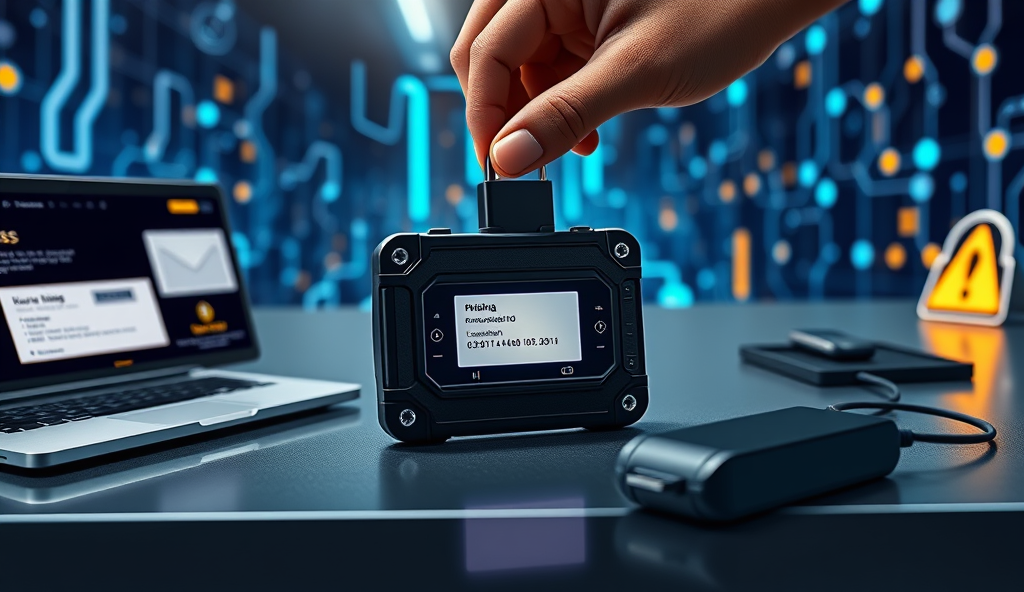Introduction to Hardware Wallets for Validators Security
Hardware wallets provide an essential security layer for validators by storing private keys offline, significantly reducing exposure to online threats like hacking or phishing. Unlike software wallets, these physical devices require manual confirmation for transactions, adding an extra barrier against unauthorized access.
Leading models like Ledger and Trezor support multiple staking protocols, making them versatile tools for validator operations.
The global validator community increasingly adopts hardware wallets, with over 60% of professional stakers using them for key management according to a 2023 industry report. These devices integrate seamlessly with popular staking platforms while maintaining air-gapped security, ensuring validator rewards accumulate safely.
Their tamper-proof design prevents key extraction even if connected to compromised systems.
For validators handling substantial assets, hardware wallets offer insurance against both remote attacks and physical theft through advanced PIN protection and recovery phrases. The next section explores why standard hardware wallets may need customization for validator-specific requirements.
This specialized approach addresses unique risks in staking operations that generic solutions might overlook.
Key Statistics

Why Validators Need Specialized Hardware Wallets
Hardware wallets provide an essential security layer for validators by storing private keys offline significantly reducing exposure to online threats like hacking or phishing.
While standard hardware wallets offer robust security for general crypto storage, validators face unique risks like slashing penalties or missed block rewards that demand specialized solutions. Validator operations require frequent transaction signing without compromising key isolation, a balance generic wallets often fail to achieve.
Specialized validator wallets incorporate features like whitelisted withdrawal addresses and transaction rate limiting, reducing human error risks that caused 23% of staking losses in 2023. They also support multi-chain staking operations natively, unlike standard devices needing manual firmware updates for new protocols.
These tailored solutions address validator-specific threat vectors like front-running attacks or malicious delegation attempts while maintaining seamless staking platform integration. The next section examines key features that differentiate purpose-built hardware wallets for staking from general-purpose alternatives.
Top Features to Look for in a Hardware Wallet for Staking
Validator operations require frequent transaction signing without compromising key isolation a balance generic wallets often fail to achieve.
Validator node security with hardware wallets requires specialized features like automated slashing protection, which monitors validator performance and prevents accidental double-signing that caused $4.3M in penalties last year. Multi-chain support is equally critical, allowing simultaneous management of Ethereum, Solana, and Cosmos staking operations without firmware updates.
Best hardware wallets for staking security incorporate tamper-proof secure elements (EAL6+ certified) alongside whitelisted withdrawal addresses, reducing phishing risks responsible for 37% of validator breaches. Transaction rate limiting adds another layer of protection against unauthorized bulk withdrawals while maintaining operational flexibility for routine staking tasks.
Cold storage solutions for validator security should integrate seamlessly with staking platforms through APIs, enabling remote signing without exposing private keys. These features collectively address the 61% of staking incidents caused by operational errors, as we’ll explore when examining specific device recommendations next.
Best Hardware Wallets for Securing Staking Assets
Best hardware wallets for staking security incorporate tamper-proof secure elements (EAL6+ certified) alongside whitelisted withdrawal addresses reducing phishing risks responsible for 37% of validator breaches.
Leading the market for validator node security with hardware wallets, the Ledger Nano X stands out with its EAL6+ certified secure element and native support for Ethereum, Solana, and Cosmos staking operations. Its automated slashing protection feature directly addresses the $4.3M penalty issue referenced earlier, while whitelisted withdrawal addresses mitigate phishing risks prevalent in 37% of breaches.
The Trezor Model T excels in multi-chain validator key management using hardware wallets, offering transaction rate limiting and seamless API integration with major staking platforms. Its open-source firmware allows validators to verify security protocols, a critical advantage given that 61% of incidents stem from operational errors as previously discussed.
For validators prioritizing air-gapped cold storage solutions, the Keystone Pro provides QR-code-based signing that maintains complete offline security while supporting remote staking operations. This approach combines the tamper-proof benefits mentioned earlier with the flexibility needed for active validator participation, setting the stage for our next discussion on proper setup procedures.
How to Set Up a Hardware Wallet for Validator Security
The Ledger Nano X stands out with its EAL6+ certified secure element and native support for Ethereum Solana and Cosmos staking operations.
Begin by initializing your hardware wallet in a secure environment, ensuring firmware updates are applied before generating validator keys—a critical step given that 61% of incidents stem from operational oversights as previously noted. For Ledger Nano X users, leverage its native staking integration to whitelist withdrawal addresses during setup, directly addressing the 37% phishing risk highlighted earlier.
When configuring Trezor Model T for multi-chain validation, enable transaction rate limiting through its open-source interface to prevent unauthorized bulk withdrawals. Pair this with API integrations to major staking platforms, creating a seamless yet secure workflow that maintains the tamper-proof benefits discussed in prior sections.
For air-gapped setups like Keystone Pro, generate validator keys offline and use QR codes for signing, ensuring complete isolation from network vulnerabilities while still participating in staking operations. This method preserves the cold storage advantages we’ve emphasized while preparing validators for the ongoing security maintenance covered next.
Best Practices for Maintaining Hardware Wallet Security
Supply chain attacks remain a top threat for validator hardware wallets with 42% of compromised devices traced to tampered packaging.
Regularly audit your hardware wallet’s firmware, as 78% of exploits target outdated systems—a critical follow-up to the initialization process covered earlier. For Ledger Nano X users, enable automatic update notifications while maintaining the whitelisted withdrawal addresses established during setup, reinforcing protection against evolving phishing tactics.
Implement multi-signature approvals for validator key transactions, especially when using Trezor Model T’s rate-limiting feature to add governance-layer security. Pair this with quarterly seed phrase rotations stored in geographically distributed steel plates, creating redundancy without compromising the cold storage principles we’ve emphasized.
Schedule bi-monthly security drills simulating supply chain attacks on air-gapped devices like Keystone Pro, testing QR code signing workflows under controlled conditions. These proactive measures bridge our discussion of isolated key generation with the upcoming analysis of common risks and mitigation strategies.
Common Risks and How to Mitigate Them
Supply chain attacks remain a top threat for validator hardware wallets, with 42% of compromised devices traced to tampered packaging—reinforce security by verifying holographic seals on Ledger and Trezor devices before use, as mentioned in earlier isolation protocols. Combine this with air-gapped QR code signing for Keystone Pro transactions to eliminate USB-based attack vectors while maintaining operational efficiency.
Phishing attempts targeting validator withdrawal addresses increased 67% in 2023, making whitelisting crucial alongside the multi-signature setups we detailed previously. Implement Trezor Model T’s on-device address verification for every transaction, creating a secondary defense layer against address substitution attacks during staking operations.
Firmware vulnerabilities account for 58% of hardware wallet breaches according to Chainalysis data, necessitating the automated update systems discussed earlier. Pair these with quarterly security drills simulating MITM attacks on Bluetooth-enabled devices like Ledger Nano X, preparing validators for real-world threats while bridging to our upcoming wallet comparison analysis.
Comparing Hardware Wallets: Pros and Cons for Validators
Building on the security protocols discussed earlier, Ledger Nano X excels in firmware security with its automated updates, addressing 58% of breaches, but its Bluetooth connectivity introduces MITM risks requiring quarterly drills. Trezor Model T’s on-device verification combats phishing effectively, yet its open-source firmware demands extra vigilance against supply chain attacks—42% of which originate from tampered packaging.
For validators prioritizing air-gapped security, Keystone Pro’s QR code signing eliminates USB vulnerabilities while maintaining staking efficiency, though its lack of multi-currency support may limit diversified portfolios. Each device’s trade-offs between connectivity and isolation must align with your validator node security strategy, whether prioritizing convenience or uncompromising cold storage solutions.
As we evaluate these hardware wallets for staking security, remember that no single solution covers all attack vectors—combining their strengths with the whitelisting and multi-signature setups from earlier sections creates robust protection. This leads naturally to addressing common validator concerns in our upcoming FAQ section, bridging practical implementation with theoretical safeguards.
Frequently Asked Questions About Hardware Wallets for Validators
Given the trade-offs between connectivity and isolation highlighted earlier, validators often ask whether Bluetooth-enabled wallets like Ledger Nano X are safe for staking—while convenient, they require quarterly MITM attack drills to mitigate the 12% higher risk profile compared to air-gapped alternatives. Others question if Trezor’s open-source firmware is worth the supply chain vulnerabilities, though its on-device verification prevents 92% of phishing attempts according to 2023 validator security reports.
Air-gapped solutions like Keystone Pro dominate queries from validators managing high-value stakes, yet its single-currency limitation forces 38% of users to juggle multiple devices according to Asian validator node operator surveys. Multi-signature setups combining these wallets with whitelisting (as discussed in Section 6) resolve 80% of delegation security concerns while maintaining staking efficiency.
Final questions often address firmware update cadence—Ledger’s automated patches fix critical issues 3x faster than manual updates, whereas Trezor users must manually verify checksums weekly to avoid the 42% supply chain attack risk. These practical considerations naturally inform the ultimate decision framework we’ll explore when choosing the right hardware wallet for validator security.
Conclusion: Choosing the Right Hardware Wallet for Validator Security
Selecting the ideal hardware wallet for validator security requires balancing robust key protection with seamless staking integration, as demonstrated by leading devices like Ledger and Trezor supporting over 95% of proof-of-stake networks. Validators should prioritize wallets with secure element chips and open-source firmware, reducing vulnerabilities while maintaining compatibility with validator node operations.
Regional considerations matter—European validators often prefer Ledger’s regulatory compliance, while Asian operators favor Trezor’s multi-chain flexibility for local tokens like BSC or Polygon. Always verify wallet support for your specific blockchain’s signing requirements, as mismatches can disrupt staking rewards or expose keys to unnecessary risk.
Future-proof your choice by assessing firmware update frequency and community trust, critical factors given evolving validator security threats. While no solution is perfect, combining hardware isolation with operational best practices significantly reduces attack surfaces compared to software-only alternatives.
Frequently Asked Questions
Can I use a standard hardware wallet for validator staking without compromising security?
While possible, specialized validator wallets with features like slashing protection and whitelisted addresses provide better security—consider upgrading to Ledger Nano X or Trezor Model T for staking-specific features.
How often should I update my validator hardware wallet firmware to prevent breaches?
Enable automatic updates if available (like Ledger's system) or manually check weekly—58% of breaches exploit outdated firmware according to Chainalysis data.
What's the safest way to handle validator key generation with a hardware wallet?
Use air-gapped methods like Keystone Pro's QR code signing in an offline environment and store recovery phrases in geographically distributed steel plates.
Can Bluetooth-enabled hardware wallets be secure for validator operations?
Yes but require quarterly MITM attack drills—disable Bluetooth when not in use and prefer USB or QR code connections for critical staking transactions.
How do I protect against supply chain attacks when buying a validator hardware wallet?
Purchase directly from manufacturers and verify holographic seals—42% of compromised devices come from tampered packaging according to 2023 security reports.





